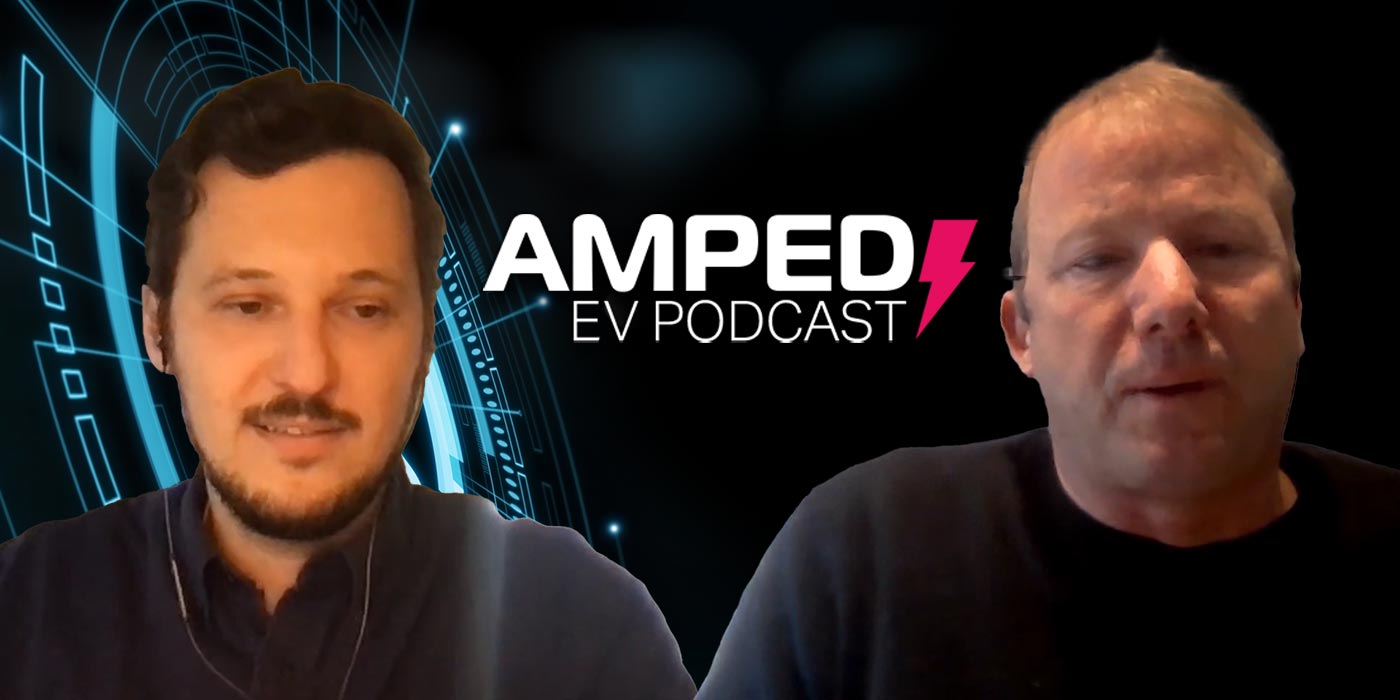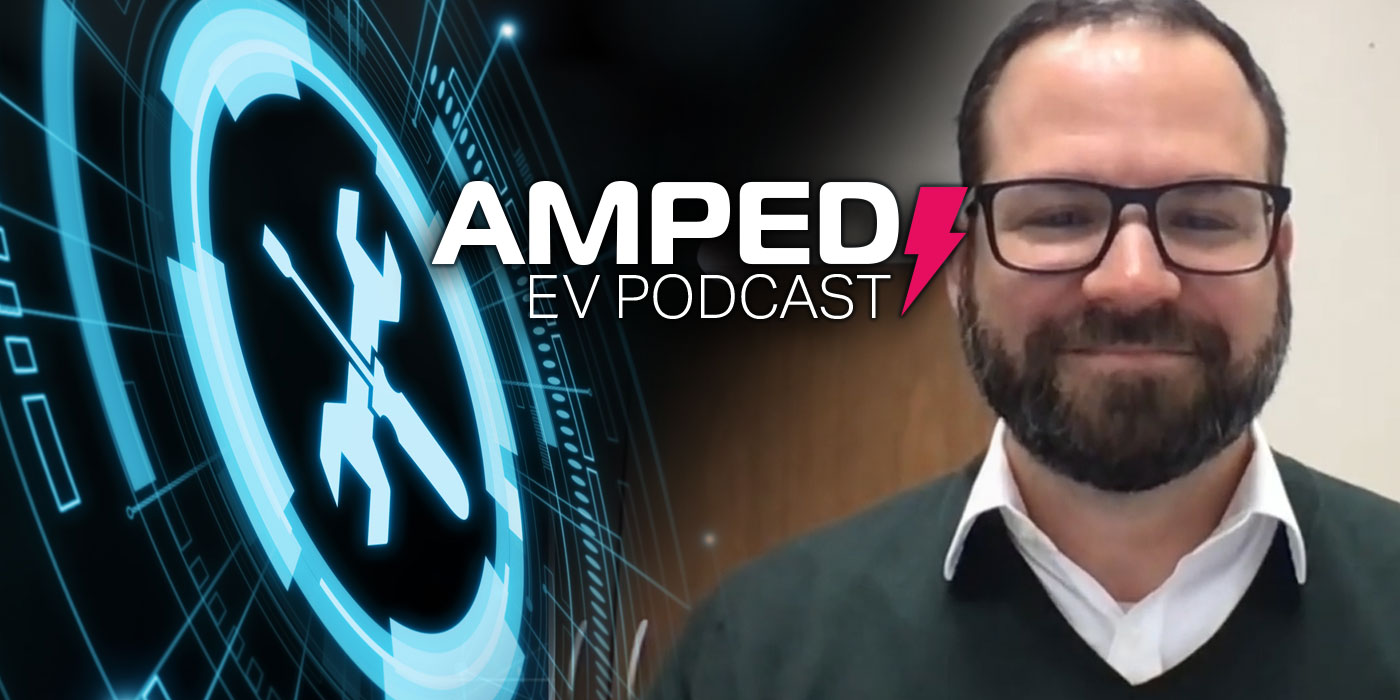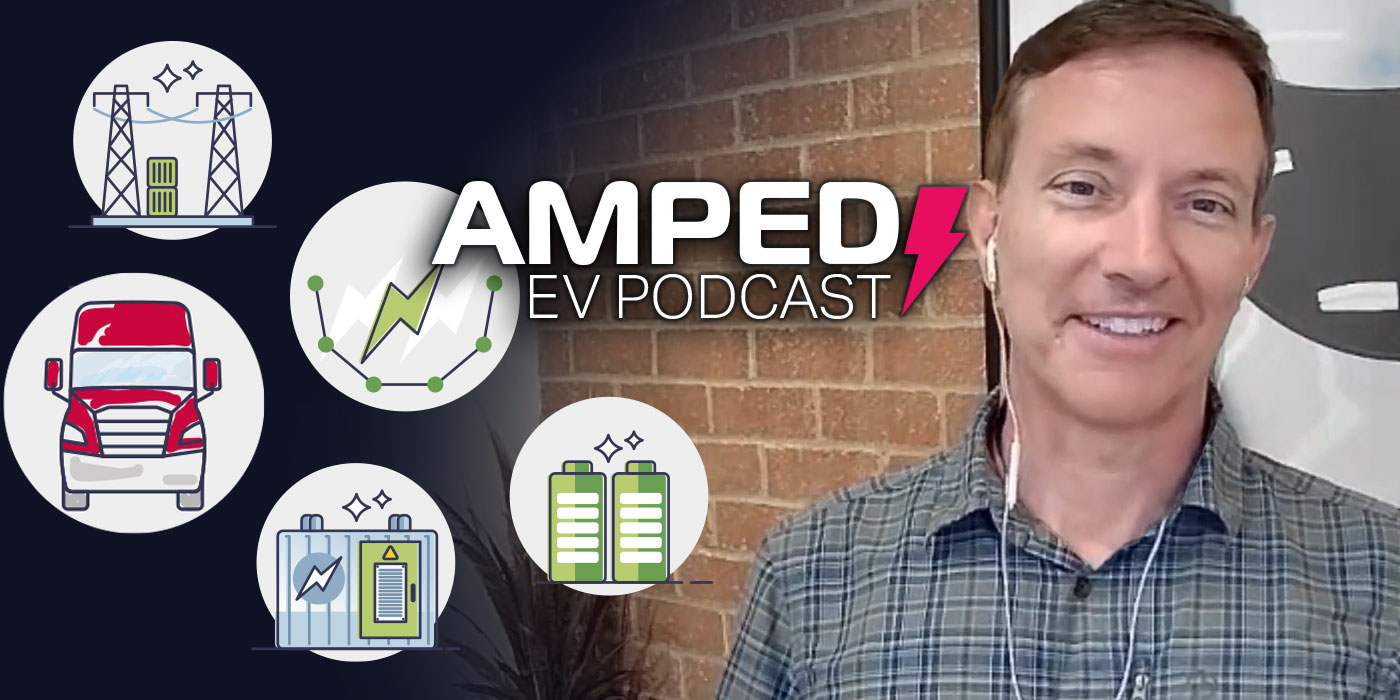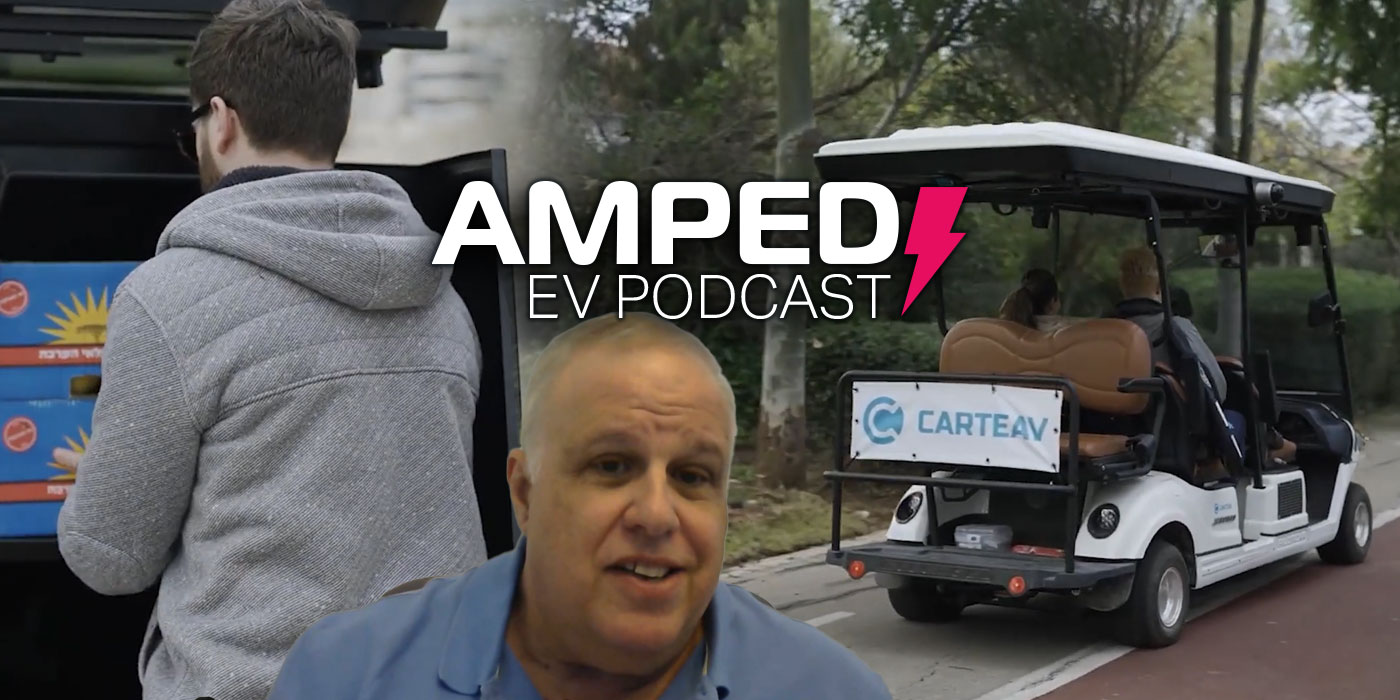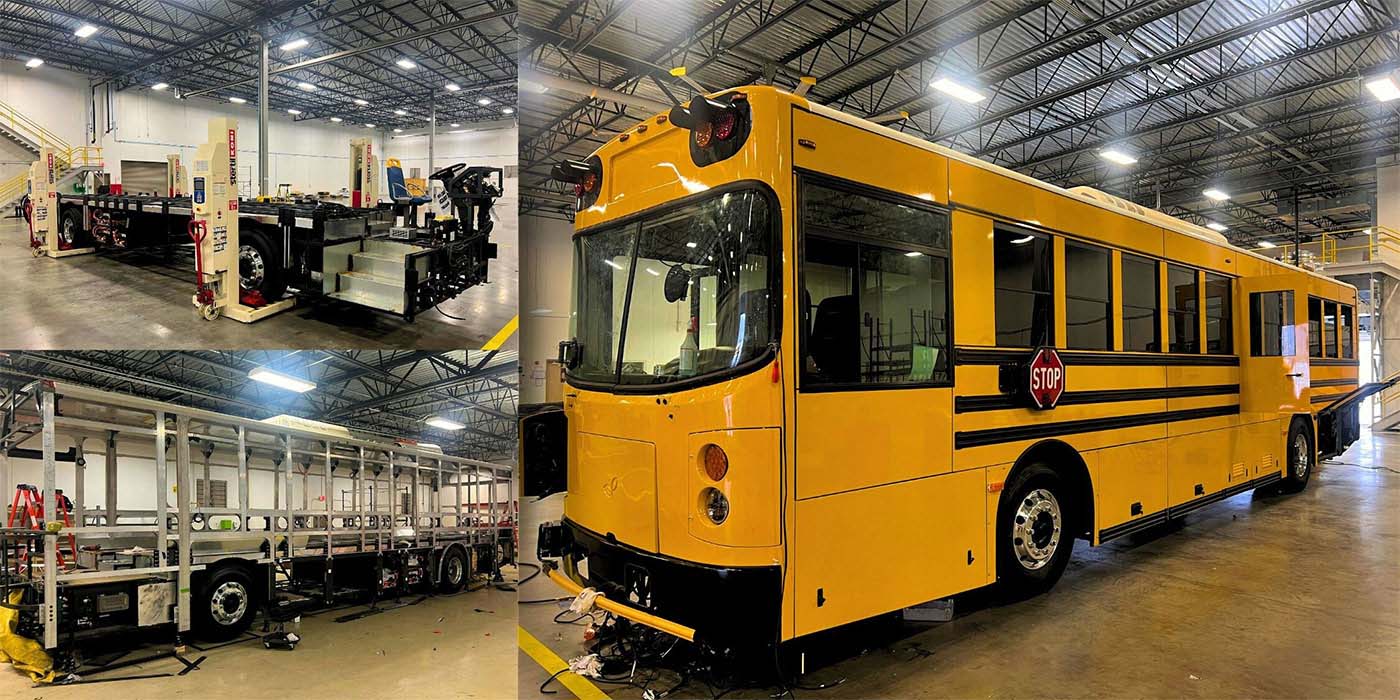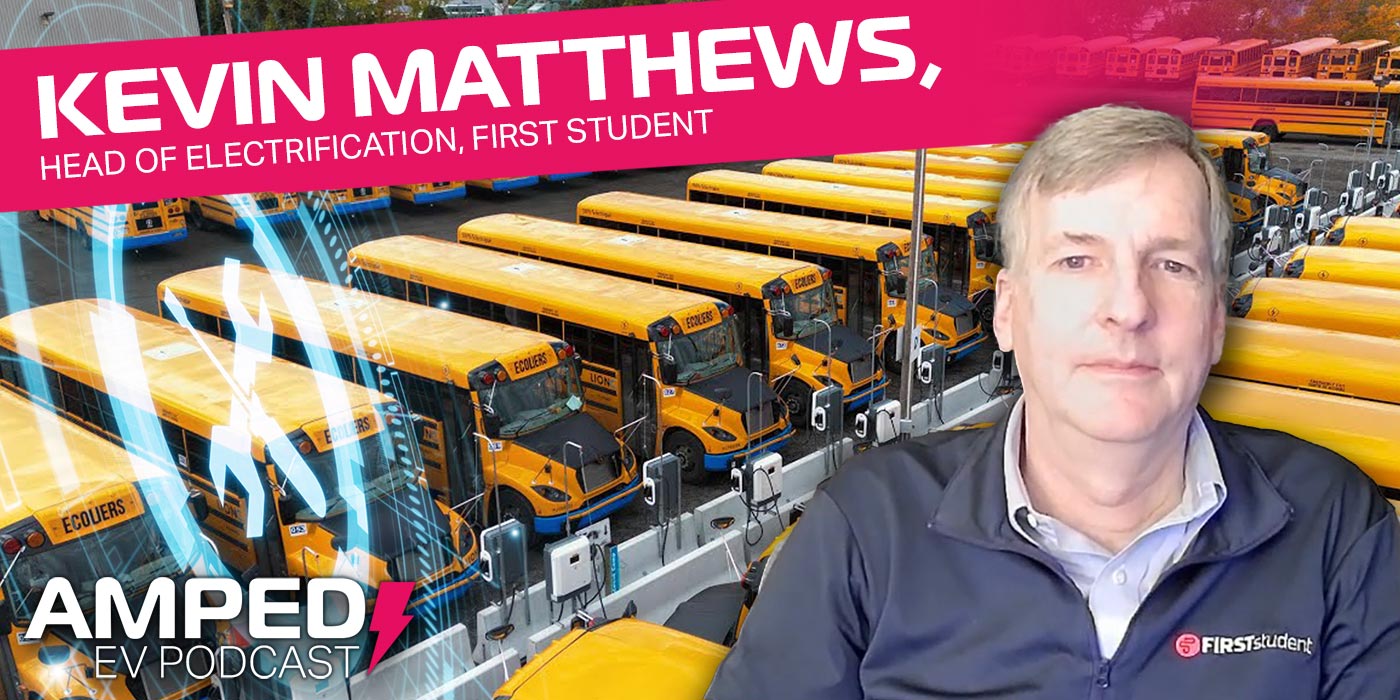In late October, the EPA announced nearly $1 billion was awarded through the Clean School Bus Rebate Lottery program to support 389 school districts across the country with their school bus electrification projects. The intention of this program is to accelerate electrification by giving schools the financial resources to transition their diesel bus fleets to all-electric.
On this episode of The Amped EV Podcast, we catch up with the transportation director, Rick Grisham, at one of those school districts, Richland County School District One in Columbia, South Carolina, the 11th-largest school district in South Carolina, to understand why the district wants to transition to electric, what the process has been like and who the major stakeholders are to make the district’s plans a reality.
One of those stakeholders is Proterra, who is working with Richland One from start to finish to guide them through the transition process. We also talk with Mabel Feng, the director of product management at Proterra, to hear about the technology that powers the school buses, charging solutions, infrastructure and management software Richland One is using.
Want more Amped EV podcast? Click here.
Here’s a transcript of the show:
Jason Morgan: Hey everyone, welcome to the Amped EV podcast. I’m Jason Morgan, content director for Fleet Equipment.
Nadine Battah: And I’m Nadine Battah, multimedia senior editor, at ShopOwner.
Jason Morgan: We’re talking with two really interesting people today. So we’ve talked a lot about in EV world we talk consumer cars, we talk commercial trucks… Today we’re going to talk about school buses. All-electric battery, electric school buses, and how they’re rolling out.
Nadine Battah: Did you ride the school bus growing up?
Jason Morgan: No. You know what? I did not. I was a car rider. How about you?
Nadine Battah: Oh, I did a mixture of both. Well, I was in the back of the bus. That’s where we got rowdy.
Jason Morgan: Yeah, I know. I was on school buses, I was a band nerd. Now, I have driven a battery electric bus. One of the Jouley buses. It was a prototype. It was years ago. They’ve moved forward now.
Nadine Battah: I’m excited.
Jason Morgan: And, interestingly enough, what we’re talking about today is an East Coast electric bus project. We talk a lot about California. It’s all California. Oh, California’s so great. Yeah, whatever. There are other parts of this country also electrifying. So we’re going to Columbia, South Carolina. We’re going to talk with Mabel Feng, the director of product management at Proterra. And Rick Grisham, director of student transportation, Richland One School District. Are you ready for the interview?
Nadine Battah: I’m ready. Are you?
Jason Morgan: Yeah. Let’s see what we can learn.
Jason Morgan: Hi Mabel. Rick, thanks so much for taking the time to talk with us today. Really excited to learn more about what you’re doing here in the electric school bus arena. So we will just start kicking it off here. Rick, I’m going to start with you. Tell us a little bit about your school district and the transition to all-electric buses. What’s appealing about an all-electric bus and is this a transformation of your bus fleet that you see? Or is are you testing the waters here?
Rick Grisham: Yeah, that’s a good question. Hey, I’m at Richland One School District. We’re an inner city school district, right downtown Columbia, South Carolina, our state capital. We’re the 11th largest school district in South Carolina out of 74.
Jason Morgan: Wow.
Rick Grisham: We service 22,000 students, most of them need the bus ride to get to and from school to get their education and really about 15,000 students ride regularly each day and we service 48 schools with 200 routes. So with 200 route buses uniquely in South Carolina, the majority of the school buses are owned and maintained and operated by our State Department of Education, a very rarity in the United States for that matter. Then the district, we own about 48 buses that we run special instructional programs, field trips, activity trips that we run, that we maintain ourselves separately. So it’s kind of a kind of two in one unique thing here so the whole electric school bus thing got going when last summer went to the state conference and I saw kids ride clean school bus essay contest sponsored by one of our foundations here, the Ava Meyer Foundation, Austin Meyer, you can probably hear that name down the road. He’s a very strong advocate for EV vehicles. He owns, actually owns an EV vehicle himself. I don’t know how many he’s got, but I know he is got one.
And so he put this out there if the foundation was going to fund about 16 electric school buses in the state of South Carolina only and it was going to be done by student essays, the advantages of using an electric school bus and students had to write essays and the way I understand it, we had multiple schools and students that submitted that helped us win our first school bus last spring and we’ve been playing around with routes with it and we’ve been putting it on special trips. It’s been on a couple of parades. It’s been at a couple of events in downtown Columbia. We had an electric vehicle display in downtown Columbia about two months ago where we were the only bus on display for that electric event. It was really a nice thing, co-sponsored by the… There’s an electric bus coalition here in Columbia so we saw the need to start looking at it, but it’s a total buy-in by your school district, your school, your superintendent, the school board.
You’re looking at a $358,000 vehicle versus a $100,000 vehicle for a diesel-type bus so really it was going to be a commitment not only to the environment but also financially if we want to move over to a fully electric fleet. I personally, we haven’t gone to a lot of discussions with the school district, but because we’ve got the new bipartisan infrastructure law that came into place with $5 billion available, it really opened an eye that we could truly move into taking more of our fleet into the electric bus world. We currently run diesel, propane and we got our one electric bus running on district routes. So our plan, if it works out well, we’re going to keep moving forward with this infrastructure rebate money that the state has helped us secure and we’re expecting to receive 16 electric buses in a few months.
The State Department will bid those out and put the orders in and I don’t know the process how far along they are in the process, but they’re pretty much going to take care of us and so really we’ve got a win-win here. We get to move into the electrification world without really any financial commitment or financial investment with this rebate money and the State Department maintaining that and which will also include the charging stations so there’s no doubt there are great benefits of electric buses, drivers that have got a chance to be trained and have driven the electric bus and they just love it ’cause it’s so quiet. We see it better quality ride, not only environmentally with the carbon footprint and all the good things environmentally, but also it’s just that you don’t have that loud roaring diesel engine in the bus and the driver trying to talk over it on a microphone or with their regular voice.
So it’s super quiet and really we joke about this, the only disadvantage we see of the electric bus is that kids that are getting up late out of bed won’t hear the bus coming to the neighborhood and it’s going to be super quiet and so they’re going to have to learn to get out there and catch their bus because they won’t hear it coming at all but this whole thing has been catapulted with the first one bus and we were the first electric bus in the state of South Carolina, which worked out great for us to take delivery on that in South Carolina.
So we felt like we helped set the stage for our state and with our state department’s assistance with that new law and the rebate, we feel like we’re on the road to hopefully seeing at least a third, at least moving toward getting at least a third of our fleet to the electrification because for me personally as a director, I’ve been in the business over 20 years and when you have hurricanes and finance, you have catastrophic weather, you know you put in all your eggs in one basket, it makes it tough. You can’t get diesel sometimes when a hurricane hits and getting diesel pumped in and then if the power’s out will you power up your buses? How will you power up your buses? And so having the diversification with propane added with electric, I personally see a win-win combination if we could do both.
But there’s no doubt the electrification has a big wave with that money coming in for the next five years and we are only getting 16, which we’re very fortunate to get but we’ll put in for money every year. Who knows? So you can get a maximum of 25 buses per year, per school district so we may end up putting in for more with the State Department’s help. So it’s a win-win for us here. Our superintendent and board love it. They’ve ridden on the bus here and we feel like it’s where we need to go and where we need to be headed.
Nadine Battah: Well, it’s awesome to hear that you guys are definitely moving in the right direction, Rick, to move forward. So can you tell us a little bit about what the process has been like for you so far to add electric buses to your school bus fleet? And of course, you’re not doing it by yourself, so who are the major stakeholders you’re working with to make your plans a reality?
Rick Grisham: Yeah, it actually kind of landed in our lap last spring where we won an electric bus through an essay contest with a foundation here in working with our state dealer with the Thomas bus and so we were kind of thrust into it with a free bus coming our way and we had to accept it knowing that we will be adding to that why take one electric bus if we’re not planning to add to it? So you had to get buy-in really quickly once we were awarded that bus last spring. So we did get an easy buy-in from our school board and from our superintendent to take it knowing that we’ll be looking toward maybe adding onto it, not knowing if we would receive any of this current, most recent money that’s coming out from the bipartisan infrastructure law that came into play where they’re going to be handing out rebates for $5 billion, a billion per year.
And so we were fortunate to receive 16 of those that’ll be coming in the coming months. So we knew it was more educating and getting the word out that especially the advantages of electrification not only for the environment but also student really student education. So we see our school board members even mentioned that we see using this really with our STEM programs in magnet schools that are studying this kind of technology and this new moving forward and going more green but we also see a good quality of bus ride for the students. It’s an overall win-win for especially with the investment that the State Department’s doing. So our major stakeholder in this process was really the State Department of Education of South Carolina and the director there, Mike Bowman, reached out and said “Hey, we’re applying for you guys for 16 and we were going to apply for seven for the district. So knowing that we’re going to get 16, we just conceded because Richland One is entitled to one account and so we were going to hopefully get those 16, which we did.
And so we’re going to let them be the experimentation with those first 16 to go with our one and so we’re going to see how that works out to see, to start keeping the data. And then we got buy-in also locally, we have an electric, kind of an electric commission or coalition here. It’s a group that’s pushing for electric vehicles and they were having to run an electric vent in downtown Columbia a couple of months ago when we were asked to put our bus on display. We had several hundred people come through and so we had people get on the bus, check it out. So we have buy-in from our local communities and we’re going to get the education going so we do know through the State Department and really I was really amazed at when we’re working on this EPA rebate, the EPA was very friendly and very easy and really worked with us on that. So I was very impressed with them as a stakeholder and an investment into this.
So through that process, we got our 16, the state of South Carolina got over 190 buses total. I think we’re the third largest disbursement that was given out. I think they gave out over 2,600 buses in this first round of money and we received a good portion of that for the state of South Carolina so it’s really, it’s now going to get the students excited and educated in the community but it’s been a local effort that’s been well received because we were the first electric school bus that was delivered in the state of South Carolina last spring. So that’s kind of a wrap on who I was involved and if I haven’t mentioned, I appreciate the support we’ve received on our one school bus and the future training that we get from our dealer who’s trained the drivers and the mechanics and we now put in the infrastructure to move forward for those 16 buses coming.
Jason Morgan: For sure it takes a village really. Okay, so I’ve got a question both of you can field on this, we’ll start with Mabel here on this side and I’m excited about it ’cause I’m an equipment guy. So can you tell me about the bus? What are some of the specs of the bus that you you’ve delivered here and what’s going to meet the needs of the school district?
Mabel Feng: Yeah, first of all, thank you for having me on and I’ll just do a quick introduction of Proterra. So Proterra is a company that’s been delivering clean transportation solutions. We’ve got buses, our own buses on the road for over 10 years. US manufacturing facilities on both coasts and our buses we have almost a thousand buses running 30 million miles and then in addition to that, powering over a thousand vehicles with our core battery products. And so we’re very fortunate to have partners that have helped electrify their solutions with our Proterra product technology and there’s the transit business, the powered business, mostly the batteries and then the energy business which covers the charging infrastructure and software services as well. And so a little bit more about the bus here that we’re talking about is through our partnership with Thomas Built Buses as many of you know, one of the leading manufacturers of school buses in the sector.
And we’ve been working with them for several years, I think 2018 or so and the buses we have today, it’s the Saf-T-Liner C2 Jouley bus. We have over 200 out already delivered in North America, excited to bring the Richland One District even more of these. And just in Virginia alone, over half a million miles already have been driven on this 450 tons of CO2 greenhouse gas emissions reduced. So really excited about that. But a little bit back to the technology. So a lot of the battery packs, we have two battery packs on these buses of our latest generation products built out of our Proterra US facilities here and we also power provide other components that make up the electric powertrain. The drivetrain itself, so the high voltage electronics as well as some supporting components as well so we kind of really deliver a more complete solution that goes on this bus.
And so we’ve been working on this from a technical perspective and help enable them so that they can sell their buses. We have our own support staff to help train, educate, what does the battery mean? What does it mean? How many miles does it get them? This is a lot of new stuff, Rick, and you know, having to educate all these different stakeholders on can I really drive from A to Z and got all my kids’ home? You really don’t want a bus stuck on a hill because the motor is not powerful enough. But these buses have over 200 kilowatt hours, it easily can go over a hundred miles. I know that may vary based on conditions, but we’ve tested from Canada down to Arizona in different temperature conditions and at the core of this is this technology is actually the same technology, the same platform as what we power our Proterra buses.
So be able to leverage those 30 million miles learnings from it, the data, the field experience that’s contributed to our ability to get these products out on the road on these Jouley buses and for these school fleets and so that’s really exciting and on top of that, these buses actually have bidirectional charging, so the capability to supply power back to the grid. So you might hear a vehicle to grid or vehicle to something else and so that’s pretty exciting and we have that capability if the environment is able to accept that.
Jason Morgan: Yeah, very cool. Rick, did you have anything to add on the equipment side, how it’s meeting the demand on the school districts? I mean you’re picking kids up and dropping them off, how’s it going?
Rick Grisham: It’s interesting trying to keep the data tracked to how many miles we’re actually going to get to have good baseline data for the future. So yeah, we’re tracking it and the kids love it. The parents love it. With only one bus, everybody wants it so we’re moving it around. We’ve got it assigned, we’ll move it around to other elementary schools for the rest of the school year.
Nadine Battah: It’s excellent to hear that testing is being done to make sure that everything is being figured out before you move forward. Mabel, how can a company like Proterra help a school district electrify its fleet? What are some of the big lessons you’ve learned so far?
Mabel Feng: Yeah, so we’re very fortunate to have the experience and nothing like learning with real products on the road. There’s only so much simulation can tell us, but more than that, this is complex. It’s a whole journey to electrify. You’re changing a lot of things, it’s not just drop-and-replace the vehicle, right? We can talk a little bit more about charging, but through our experience, through our three different businesses, the vehicle side, the battery side and the charging side, we provide a deeper level partnership to help guide a lot of the school districts and all the various stakeholders, bring them a lot of them together to help guide them through this journey. It’s kind of a windy journey, it’s not linear. There are a lot of things outside our control and that’s really important to almost anticipate. I’m going through a bathroom model construction so those things ever go smoothly. It’s the same thing here.
And we leveraged over the decades of experience things like how do we do a site walk on where the school district and then doing a map, a route map of where do these buses tend to go? How often do they need to drive 30 miles? 50 miles? Of course, there’s always that weekend, the away game to go further. How do we make sure we size a battery sufficiently to make it work economically but also not risk having kids stranded. That’s the absolute worst thing that can happen. So we take all that experience and combine it so we have a kind of step-by-step engagement process and then walking through that journey more of a partnership, actually providing the products, helping source and designing the solutions but also the support afterward on the operations, the maintenance, the servicing through our software as well as through our field technicians as well who really know how to handle these kinds of pretty new technologies out there and the [inaudible 00:20:23] also can bring them back to our factory for rework if necessary.
Jason Morgan: Yeah, for sure. I mean what’s interesting, what stands out to me, right? Because in the commercial world, trucking world, we talk about range anxiety and delivering loads. On the consumer side it’s about getting the A to B and where you want, where you’re going to charge but in this application as a school bus, as you noted, I mean you have the most important cargo, you have the kids that need picked up and dropped off and there is no margin for error at all with that kind of passenger. You mentioned the charging, so I want to dig into that a little bit. What is the charging plan here and any other maybe unique challenges you’re facing as you’re going to build out this program going from one bus to 16, 17 to beyond. Mabel, what do you see going forward? What’s the plan?
Mabel Feng: Yeah, and I think that’s one of the main challenges I see. I’ll talk about just general fleet electrification, just dig into that a little bit more. One is just all the routes may be quite different. The needs are varied. How do you design for not too much the worst case so you oversize a battery but also not sufficient? So there’s a lot of complexity there and then also how to manage a diversified fleet like Rick you mentioned having multiple different sources to play it safe and so the number one challenge, a big challenge is how much of the fleet do you want to electrify? And that leads to how many additional potential electrical upgrades are needed? Where? Where do they think we need charging? Do we have that? Is it always back at a specific depot? And then the school, unlike delivery or buses have a more around-the-clock route more or less or around the year, there are many, many times of the year or even during the day where the school bus is idle.
So what do you do there? Where does it go? Where should it go to take advantage of things like vehicle to grid? So mapping all that is part of that and so that comes into the infrastructure and I think thinking through how do we plan it? How do we balance all the nice to haves, what’s technology available? There’s kind of different levels of charging, some are a little bit slower or faster, more expensive. Where you charge and what utility you’re connected to can make a big difference in terms the total cost of ownership And then walking through the actual construction, how does, and so Proterra’s energy team has the experience to help walk through what’s a good location to set it up? Who do we work with? How do you work the utility to set up permits? Interconnection?
Before EVs I was in solar, a lot of the same challenges. You still have to go through that same queue with utility and so there’s a lot of projects, a lot of technologies and solutions, microgrid, solar, storage, EVs, all trying to figure out how to tap into the grid and so how do we work through that? Those are definitely some of the key challenges I see and of course all of this at the end of the day, six months to two years easily, it kind of depends and it’s how ready is the utility able to handle all this additional load?
And then some places are ready, more ready than not to deploy like a vehicle to grip. How does our pricing mechanism work and working through that all kind of is part of this whole infrastructure sort of thing to solve for because at the end of the day what we don’t want to do is have buses or any kind of electric vehicle deliver and then they can’t hook up because then they can’t do the job they were supposed to do whether it’s bring the kids, the passengers or the goods from A to B.
Jason Morgan: Right, for sure. Rick, any final thoughts here?
Rick Grisham: Yeah, the charging is going to be a unique thing because in South Carolina, 16 school districts will receive this rebate for these buses. So we’re going to have our own in-state charging network and any district that gets charging systems, we can drive maybe more out of town to go hook up at another school district so in our business it’s really a pretty safe thing because even if you didn’t charge it properly and you need to get charged, you can probably call up a school district and go over and hook it up.
So it’s still a little bit more to learn and know and do, but we’re working with it and I keep hearing different statistics and I know Mabel can probably tell you more about the data, but I was talking to the people at electric event that you don’t charge your battery a hundred percent, you charge it 80% so it lasts longer, that was a Tesla owner was telling me that. So you can’t let the battery life go below 20% to keep it in that range and I know you can set those chargers to keep it at that. So our goal is to maximize what I understand to be an eight-year warranty plan on a battery pack and so we want to make it last 10 years. So we’re going to do all we can to conserve and make that battery life last and still, yeah, we want to expand using the bus more than just in-town routes and we’ll have that network in South Carolina and definitely over the next five years we’ll see it all over the state in this.
And one thing cool about the infrastructure law, I saw in their findings that all 50 states received at least one electric bus, which is kind of cool. It’s a good start and everyone that got buses this first year, first go around can apply for more. So if we can get 16 over five year period, 16 a year, we’re well on our way to getting over a third of our fleet rolling and not be out of pocket anything so we’re excited about it. We see really big advantages here in South Carolina.
Jason Morgan: Yeah, no great. And I mean it sounds like we are going to have a lot to talk about here going forward too, because we appreciate you all taking the time to tell us a little bit about how this is rolling out for you and how it’s all going to work. I’m sure we will talk to you again very soon. Thank you again.
Rick Grisham: Thank you.
Mabel Feng: Thank you.
Jason Morgan: All right. School buses Amped.
Nadine Battah: That was great.
Jason Morgan: Well, all right. So what do you learn? What’s the takeaway?
Nadine Battah: I would say that the biggest takeaway for me is I really appreciate the amount of testing and training that’s being surrounded by this. I love that Proterra is supporting the schools from start to finish with everything that’s set up. So it’s really great to see that, it’s not just something that’s being swept under the rug, but it’s something that’s well thought out and well planned for.
Jason Morgan: Right. Well, or even supported by the community.
Nadine Battah: Absolutely.
Jason Morgan: That was one of my things. I mean, you mentioned it’s one thing for a school district to try and want to go do this. It’s another thing to have the whole community support and everyone pulling in that same direction. Very cool.
Nadine Battah: Right.
Jason Morgan: My takeaway was, the best way to do this is to win it, because, jackpot for him. Holy smokes. What better way, right? But one of the big things he mentioned several times the Inflation Reduction Act and all the EV investment that’s coming out of there and how there is a lot of money there. You can do this and really get supplemental financial support to put these vehicles into your fleet. I know this is a school district, there is a commercial component. We’re going to see some consumer investment in the way of charging infrastructure here too to support that rollout but really, I mean, it’s cool to start to see that story of, hey, there’s money available and it’s coming, right? I mean that happened earlier part of this year and now we’re starting to see how that’s bearing some fruit.
Nadine Battah: I’m amped for these electric school buses that are going to no longer make all this noise and ruck us in the early mornings. So that was a highlight for me as well, so.
Jason Morgan: Good. Well that’s true. And you did ride a bus as a kid.
Nadine Battah: Yes.
Jason Morgan: Did you listen for that when you wait to hear it?
Nadine Battah: I was definitely one of the kids that would wait to hear the bus and I would run at the end of the street and try to make it.
Jason Morgan: Got to be out there. Wow.
Jason Morgan: Well, hey, thanks for joining me. That was fantastic.
Nadine Battah: Thanks for having me, Jason.






